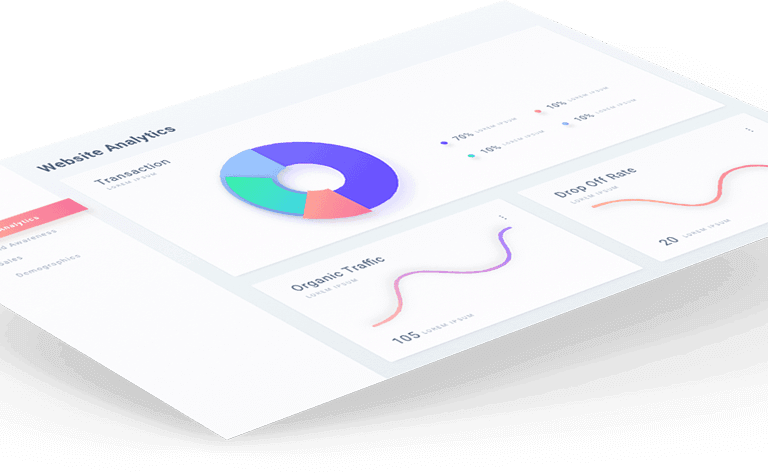Fleet management is an integral part of many industries and technology has revolutionized how businesses optimize their operations. One such technology is fleet telematics, which combines telecommunications and informatics to monitor and manage vehicles remotely.
In Australia, the adoption of fleet telematics is on the rise, with several emerging trends reshaping the industry.
This article will explore the top emerging fleet telematics trends in Australia, their benefits, and the considerations associated with their implementation.
What is Fleet Telematics?
Definition and Functionality
Fleet telematics refers to the use of technology, such as GPS and telecommunications, to collect and transmit data from vehicles in real-time. It involves the installation of telematics devices in vehicles, which gather information on vehicle location, speed, fuel consumption, driver behaviour, and more. This data is then transmitted to a central server, allowing fleet managers to monitor and analyze vehicle performance, optimize routes, and make informed decisions.
Importance of Fleet Telematics
Fleet telematics offers numerous benefits to businesses. It enables real-time tracking and monitoring of vehicles, improves operational efficiency, enhances driver safety, reduces fuel consumption, and optimizes maintenance schedules. By leveraging the power of technology and data, fleet telematics empowers businesses to streamline their operations, reduce costs, and improve overall performance.
Top Emerging Trends in Fleet Telematics in Australia
Integration with Artificial Intelligence and Machine Learning
“One of the emerging trends in fleet telematics is the integration of artificial intelligence (AI) and machine learning (ML) technologies.”

By leveraging AI and ML algorithms, telematics systems can analyze vast amounts of data to identify patterns, predict maintenance issues, optimize routes, and even detect driver fatigue or unsafe behaviour. This integration enhances decision-making capabilities, improves efficiency, and enables proactive maintenance and risk management.
Advanced Data Analytics and Predictive Maintenance
Advancements in data analytics have enabled fleet telematics systems to provide advanced data analysis and predictive maintenance capabilities. By analyzing historical and real-time data, fleet managers can gain valuable insights into vehicle performance, identify potential issues before they occur, and schedule maintenance proactively. This trend not only helps businesses reduce downtime and repair costs but also enhances fleet reliability and overall operational efficiency.
Connected Vehicles and the Internet of Things (IoT)
The integration of telematics with the Internet of Things (IoT) has opened up new possibilities for fleet management. Connected vehicles equipped with IoT sensors can collect and transmit data on various vehicle parameters, such as engine health, tire pressure, and temperature. This real-time data enables proactive maintenance, optimized routing, and improved fuel efficiency. Additionally, IoT connectivity allows for seamless integration with other systems, such as dispatch and inventory management, further streamlining operations.
Electric and Hybrid Vehicle Monitoring
With the increasing adoption of electric and hybrid vehicles, fleet telematics has evolved to include specific monitoring capabilities for these eco-friendly alternatives. Telematics systems can provide valuable insights into battery health, charging status, and energy consumption. This information helps fleet managers optimize charging schedules, plan routes that consider charging station availability, and monitor the overall performance and efficiency of electric and hybrid vehicles.
Enhanced Driver Safety and Behavior Monitoring
Fleet telematics plays a crucial role in improving driver safety and monitoring driver behaviour. Advanced telematics systems can capture data on harsh braking, acceleration, speeding, and seatbelt usage. This information allows fleet managers to identify high-risk driving behaviours, implement targeted driver training programs, and incentivize safe driving practices. By promoting safer driving habits, businesses can reduce accidents, lower insurance costs, and protect their most valuable assets—their drivers.
Sustainability and Environmental Tracking
As sustainability becomes a priority for businesses, fleet telematics has also evolved to incorporate environmental tracking capabilities. Telematics systems can monitor and report on greenhouse gas emissions, fuel consumption, and fuel efficiency. This data enables businesses to assess their environmental impact, set sustainability goals, and implement strategies to reduce carbon footprints. By optimizing routes, reducing idling time, and adopting fuel-efficient driving practices, businesses can contribute to a greener future while saving on fuel costs.
Benefits of Adopting Fleet Telematics Trends
Improved Efficiency and Cost Savings
The adoption of emerging fleet telematics trends brings significant benefits to businesses, starting with improved efficiency and cost savings. By optimizing routes, monitoring fuel consumption, and implementing predictive maintenance, businesses can reduce fuel costs, minimize vehicle downtime, and improve overall operational efficiency. These efficiencies translate into cost savings and increased profitability.
Enhanced Safety and Compliance
Fleet telematics helps businesses prioritize driver safety and ensure compliance with industry regulations. By monitoring driver behaviour, businesses can identify and address risky driving habits, reducing the likelihood of accidents and improving overall safety. Additionally, telematics systems can provide accurate records of driving hours, supporting compliance with regulations such as the Hours of Service (HOS) rules.
Increased Productivity and Customer Satisfaction
By utilizing fleet telematics, businesses can optimize routes, improve dispatching efficiency, and enhance fleet coordination. These factors contribute to increased productivity, allowing businesses to serve more customers in less time. Furthermore, accurate estimated arrival times and improved communication with customers lead to higher customer satisfaction levels and stronger relationships.
Environmental Sustainability
The adoption of fleet telematics trends aligned with sustainability initiatives helps businesses reduce their environmental impact. By monitoring fuel consumption, optimizing routes, and promoting fuel-efficient driving practices, businesses can lower greenhouse gas emissions, contribute to cleaner air quality, and demonstrate their commitment to corporate social responsibility.
Challenges and Considerations
Data Security and Privacy
With the collection and transmission of sensitive data, data security and privacy become paramount. Businesses must ensure that telematics systems adhere to robust security protocols to protect against unauthorized access and data breaches. Additionally, compliance with privacy regulations, such as the General Data Protection Regulation (GDPR), is crucial to safeguarding the privacy of both drivers and customers.
Integration and Compatibility
Integrating fleet telematics systems with existing business processes and technologies can be a complex task. Compatibility issues may arise when trying to connect telematics systems with other software or management platforms. It is essential to carefully evaluate the compatibility of different systems and ensure seamless integration to maximize the benefits of fleet telematics.
Training and Change Management
The successful adoption of fleet telematics requires adequate training and change management strategies. Fleet managers and drivers need to be educated on how to utilize the technology effectively and understand its benefits. Addressing any resistance or concerns from employees through proper training and communication can help facilitate a smooth transition and ensure the successful implementation of fleet telematics.
Conclusion
As the fleet management landscape evolves, emerging fleet telematics trends in Australia offer significant opportunities for businesses to optimize their operations, improve efficiency, and enhance safety and sustainability. Integration with artificial intelligence, advanced data analytics, IoT connectivity, and monitoring of electric vehicles are reshaping the industry. By adopting these trends and addressing the associated challenges, businesses can unlock the benefits of fleet telematics and stay ahead in an increasingly competitive market.




